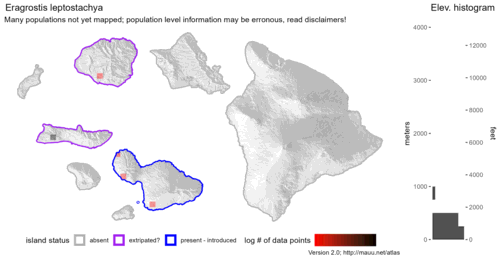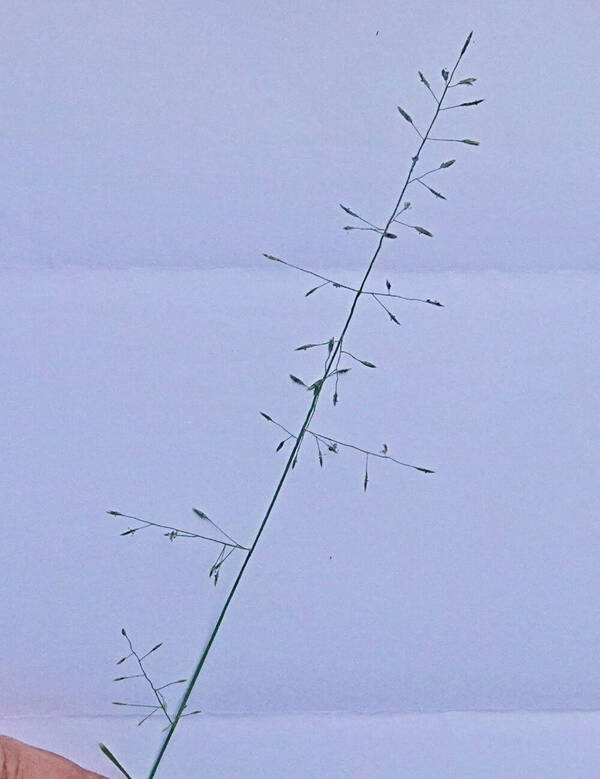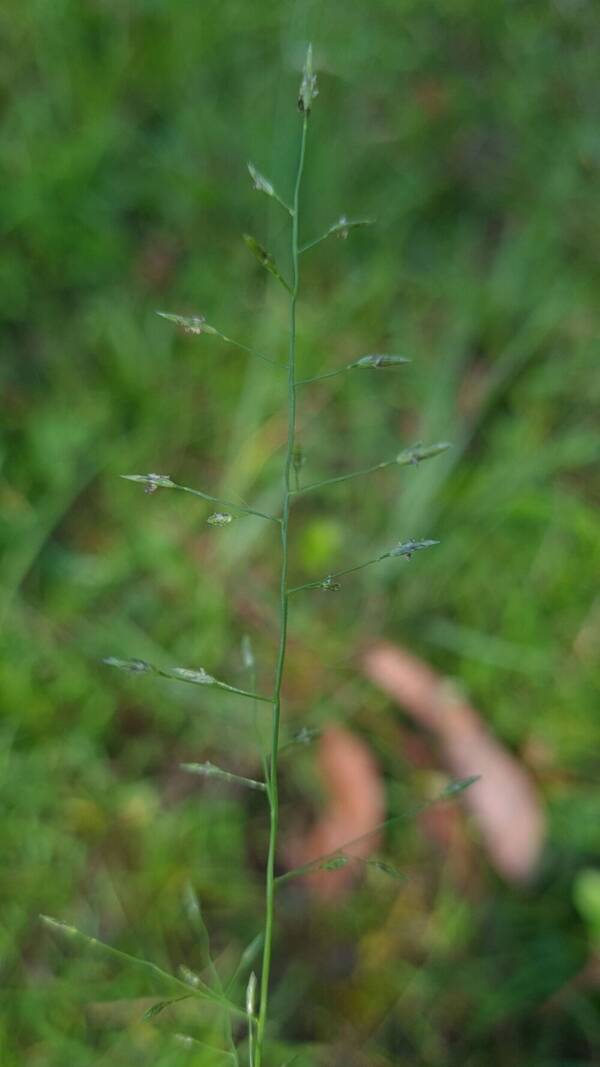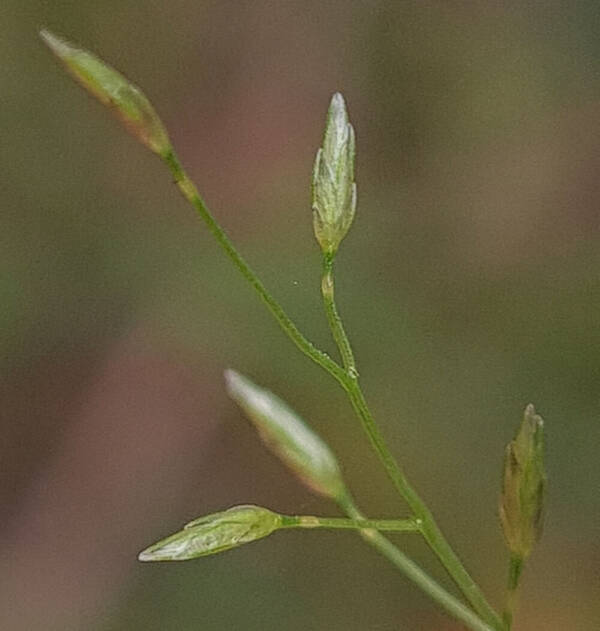Info
Subfamily: Chloridoideae
Genus etymology: Eragrostis = "love grass" [Greek] unclear origin, other etymologies such as "early grass" or "very grass" have also been speculated
Species etymology: leptostachya = "narrow spike" [Latin] likely refering to the narrow, spike-like panicle
Photosynthetic type: C4 (warm season)
Nativity: naturalized - intentional
First recorded in Hawaiʻi: 1936
Map

Inflorescence
 image credit: Max Campbell
image credit: Max Campbell image credit: Petra_Holland
image credit: Petra_HollandPlant
 image credit: Petra_Holland
image credit: Petra_HollandSpikelets
 image credit: Petra_Holland
image credit: Petra_HollandDescription
Habit: Perennial; caespitose; clumped moderately. Glands annular. Culms erect, or geniculately ascending; 50-100 cm long. Lateral branches ample. Ligule a fringe of hairs; 0.5 mm long. Leaf-blades 15-25 cm long; 2-3 mm wide. Leaf-blade surface scabrous; rough adaxially. Inflorescences: Inflorescence a panicle. Panicle open; linear, or lanceolate; 15-30 cm long; 2-4 cm wide. Primary panicle branches ascending; 4-8 cm long. Panicle branches scaberulous. Spikelets solitary. Fertile spikelets pedicelled. Pedicels 2-6 mm long; glandular. Spikelets: Spikelets comprising 6-20 fertile florets; with diminished florets at the apex. Spikelets oblong; laterally compressed; 4-6 mm long; breaking up at maturity; rhachilla persistent; retaining paleas. Rhachilla internodes obscured by lemmas. Fertile Spikelets: Spikelets comprising 6-20 fertile florets; with diminished florets at the apex. Spikelets oblong; laterally compressed; 4-6 mm long; breaking up at maturity; rhachilla persistent; retaining paleas. Rhachilla internodes obscured by lemmas. Glumes: Glumes deciduous; similar; shorter than spikelet. Lower glume ovate; 1.2-1.3 mm long; 0.9 length of upper glume; membranous; 1-keeled; 1 -veined. Lower glume primary vein scaberulous. Lower glume lateral veins absent. Lower glume apex acute. Upper glume ovate; 1.5-2 mm long; 0.9 length of adjacent fertile lemma; membranous; 1-keeled; 1 -veined. Upper glume primary vein scaberulous. Upper glume lateral veins absent. Upper glume apex acute. Florets: Fertile lemma ovate; 2-2.2 mm long; membranous; dark green, or grey; shiny; keeled; 3 -veined. Lemma midvein scaberulous. Lemma apex obtuse. Palea keels scaberulous. Apical sterile florets resembling fertile though underdeveloped. Fruits: Caryopsis with adherent pericarp; oblong; 1 mm long; dark brown, or red. Distribution: Australasia: Australia. Pacific: south-central and north-central.
(Description source: Clayton, W.D., Vorontsova, M.S., Harman, K.T. and Williamson, H. (2006 onwards). GrassBase - The Online World Grass Flora. Available at https://powo.science.kew.org )
Perennials; culms loosely tufted, decumbent to suberect, 5-10 dm long, somewhat woody at base, branching at nodes, glabrous. Sheaths sparsely pilose at throat, becoming glabrate, shorter than internodes; ligule a dense row of short, persistent hairs ca. 0.5 mm long; blades flat, usually involute toward apex, 15-25 cm long, rarely longer, 2-3 mm wide, upper surface scabrous, lower surface glabrous. Inflorescences paniculate, 15-30 cm long, 2-4 cm wide, loosely branched, the branches 4-8 cm long, ascending, sparsely scabrous; spikelets dark green, becoming gray, 4-8- flowered, oblong; glumes ovate, glabrous, keel sparsely scabrous, apex acute, first glume 1.2-1.5 mm long, second glume 1.5- 2 mm long; lemmas imbricate, concealing the rachis, 2-2.2 mm long, conspicuously 3- nerved, glabrous, keel obscurely scabrous near apex, the apex obtuse; palea slightly shorter than lemma, minutely ciliate. Caryopsis dull, reddish brown, oblong, ca. 1 mm long, apex truncate.
(Description source: O’Connor, P.J. 1990. Poaceae, pp. 1481–1604. In: Wagner W.L., Herbst D.R. & Sohmer S.H. (eds.)., Manual of the flowering plant of Hawaiʻi. Vol. 2. University of Hawaii Press & Bishop Museum Press, Honolulu )